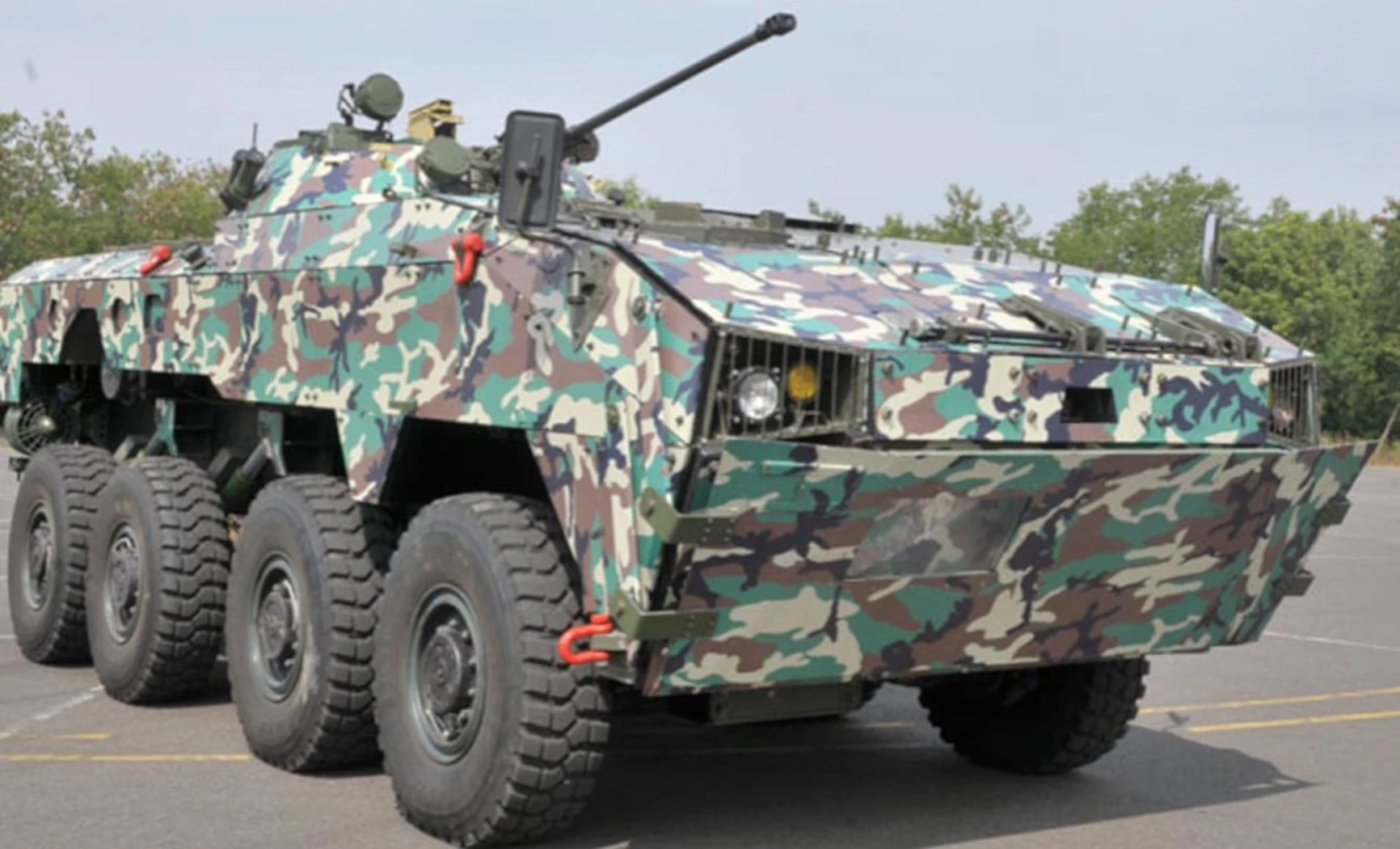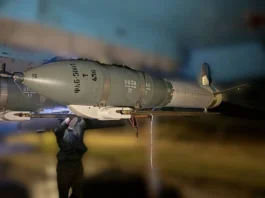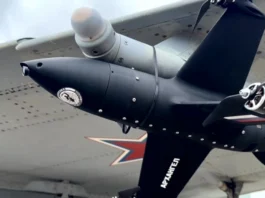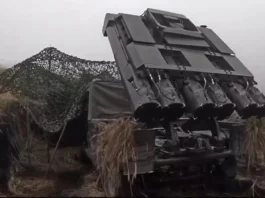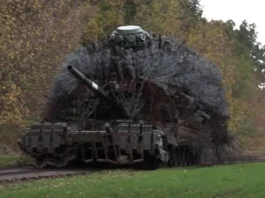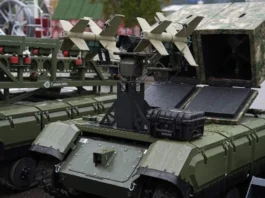In March, as planned by the Indian government, it received the first copies of its new amphibious combat vehicle WhAP (Wheeled Armored Amphibious Platform) co-produced by TATA and the DRDO (Defense Research and Development Organization). The vehicle is also known as TATA Kestrel.
The first units delivered were handed over to the Indian central Police, most likely Indo Tibetan Border Police (ITBP); the vehicles are more likely to operate in the border region of Ladakh. This operational use will also constitute a life-size test which will make it possible to determine the aptitudes of the WhAP to evolve and fight at high altitudes.
The armament of the Infantry Fighting Vehicle (IFV) version consists of a 30mm cannon mounted in a Kongsberg remotely operated turret. As per several Indian sources, this equipment could be replaced with an armament of national origin developed by BHEL (Bharat Heavy Electrical Limited) and the DRDO, the first examples of which have already been integrated into other vehicles. The armament consists of a 12.7mm machine gun and a separate firing station for the AT-4 Spigot anti-tank missile.
Weighing about 25 tons, the WhAP is powered by a Cummins ISX 600 engine developing 600hp and can carry 12 equipped soldiers. The next few months should see the Indian IFV evolve in the highlands of the Ladakh region and provide insight into its actual performance. The introduction of this vehicle should allow the Indian Army to have a modern combat vehicle capable of replacing the BMP2s, which are not very suitable for operations in mountainous regions.
The Indian armoured fire-and-move platform WhAP had succeeded in impressing Indian decision-makers, reputed to be not accommodating with locally produced equipment. The armoured vehicle developed by Tata and the DRDO with the support of the British firm SUPACAT has carried out a series of tests over the past year across the country and more particularly in the region of Ladakh in which the LAC (Line of Actual Control) marking the border between China and India is located. For a unit price of around 2.6 million euros, i.e. 30 to 50% cheaper than its Western competitors, the Indian armoured vehicle offers its users the possibility of being configured according to needs thanks to the different versions offered by the manufacturer.
WhAP for Indian Army
Tata has begun production of a limited number of vehicles which will allow it to be proven by the time the Indian Army looks for the successor to the BMP2, scheduled for the end of the decade. The TATA WhAP will undoubtedly have to participate in an acquisition process that may take a call for tenders.
TATA WhAP Evolution
The IFV developed by Tata under the name Kestrel has conducted a series of tests in the Himalayas in the past three years. Called Wheeled Armored Platform (WhAP), it was initially equipped with a BMP 2 turret integrating a 30mm 2A42 cannon coupled to a 7.62mm machine gun. A missile launcher (AT-4 or AT-5) was located between the two crew access hatches on the turret roof. The Indian Army had expressed in 2019 a need for 198 Kestrel in order to deploy them on the Pakistani border.
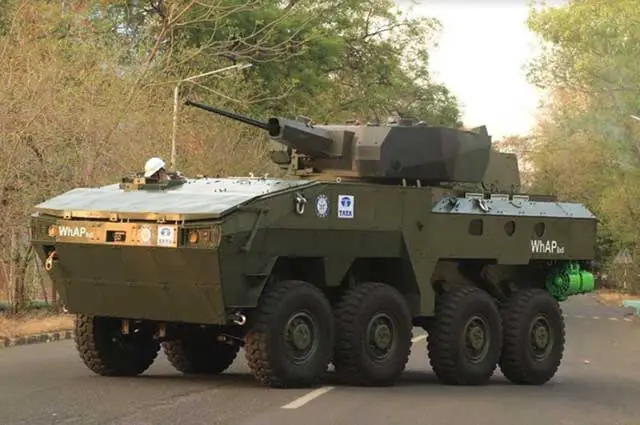
The specifications issued for the armament of these vehicles included a remotely operated turret equipped with two ready-to-use anti-tank missiles and a hold, these missiles having to be able to be fired from a position ashore by dismounted infantry.
The calibre required was a 30mm gun with 500 rounds onboard and 2000 rounds of 7.62mm.
The vehicle had to be equipped with effective active and passive protection against shaped charges and kinetic energy projectiles in terms of protection.
The delivered WhAP configuration
The Kestrel weighs 25 tonnes. The dimension of the vehicle: Length 7.80 metres (25.59 feet), Width 2.95 metres (9.28 feet) and Height 2.28 metres (7.48 feet).
The Cummins ISX 600 engine delivers 600 horsepower and 1250 pound-feet of torque. It comes with a ten lakh-kilometre reliability rating, as well as a variable geometry turbocharger and a Euro-III rating. The engine has a top speed of 100 kph and a maximum range of 500 km. It has been tested for high-altitude operations in Eastern Ladakh. WhAp’s amphibious drive mode allows it to cross streams at up to 10kph with onboard water jets. The fuel tanks are located outside, improving crew safety.
The 12 passengers can include two crew members and the soldiers, engineers, or observers. The seats are more comfortable than BMP-2 and BTR in the Indian service. The back to back seats is linked to the roof for landmine blast protection. It has three gun ports and vision blocks for firing on each side. There are two hatches for patrolling, and hydraulics operated single rear-opening door.
The NBC environment protection includes filtration systems, cabin pressurisation, and automatic climate control. The front end has a slanted armoured plate known as a glacis plate, a modern design feature found on most APCs today. Glacis plate is the strongest and most durable piece of armour in an armoured military vehicle. The sloping provides superior mine protection by increasing the shockwave’s distance to produce any damage.
The Kongsberg 30-mm cannon with a remote control system enables firing high-explosive incendiary (HEI), armour-piercing incendiary (API), and armour-piercing fin-stabilized discarding sabot tracer (APFSDS-T) rounds with a 30-mm calibre. It has an effective range of 3,000-meter. The 40-mm grenade launchers are used as a secondary weapon. It can accommodate anti-tank missiles or a 12.7mm machine gun.
